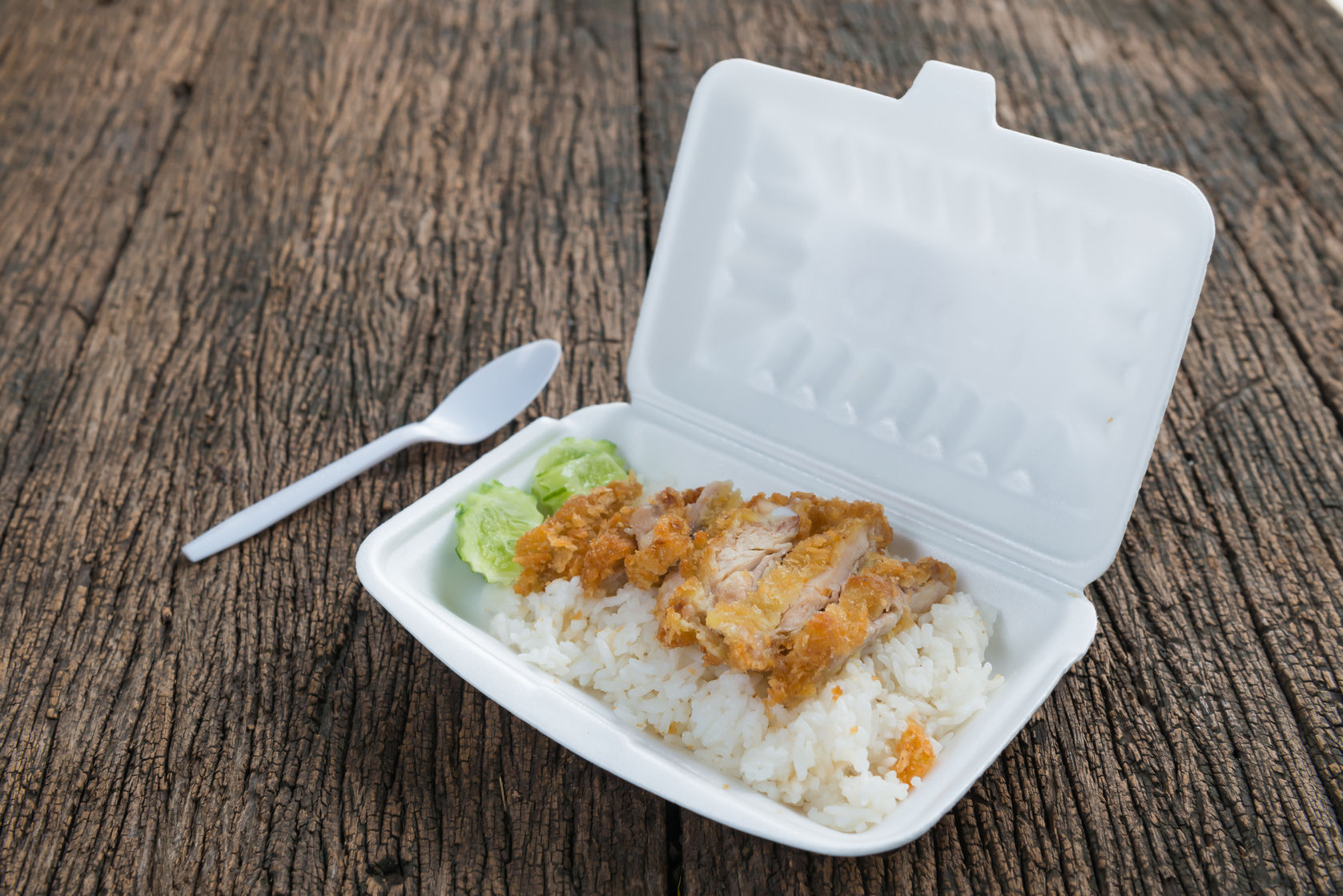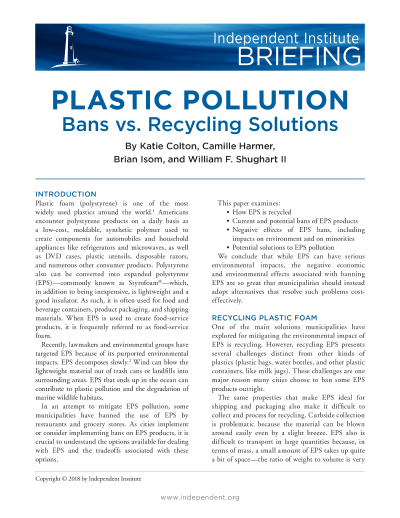Plastic foam (polystyrene) is one of the most widely used plastics around the world. Americans encounter polystyrene products on a daily basis as a low-cost, moldable, synthetic polymer used to create components for automobiles and household appliances like refrigerators and microwaves, as well as DVD cases, plastic utensils, disposable razors, and numerous other consumer products. Polystyrene also can be converted into expanded polystyrene (EPS)—commonly known as Styrofoam®—which, in addition to being inexpensive, is lightweight and a good insulator. As such, it is often used for food and beverage containers, product packaging, and shipping materials. When EPS is used to create food-service products, it is frequently referred to as food-service foam.
Recently, lawmakers and environmental groups have targeted EPS because of its purported environmental impacts. EPS decomposes slowly. Wind can blow the lightweight material out of trash cans or landfills into surrounding areas. EPS that ends up in the ocean can contribute to plastic pollution and the degradation of marine wildlife habitats.
In an attempt to mitigate EPS pollution, some municipalities have banned the use of EPS by restaurants and grocery stores. As cities implement or consider implementing bans on EPS products, it is crucial to understand the options available for dealing with EPS
This paper examines:
- How EPS is recycled
- Current and potential bans of EPS products
- Negative effects of EPS bans, including impacts on environment and on minorities
- Potential solutions to EPS pollution
We conclude that while EPS can have serious environmental impacts, the negative economic and environmental effects associated with banning EPS are so great that municipalities should instead adopt alternatives that resolve such problems costeffectively.












